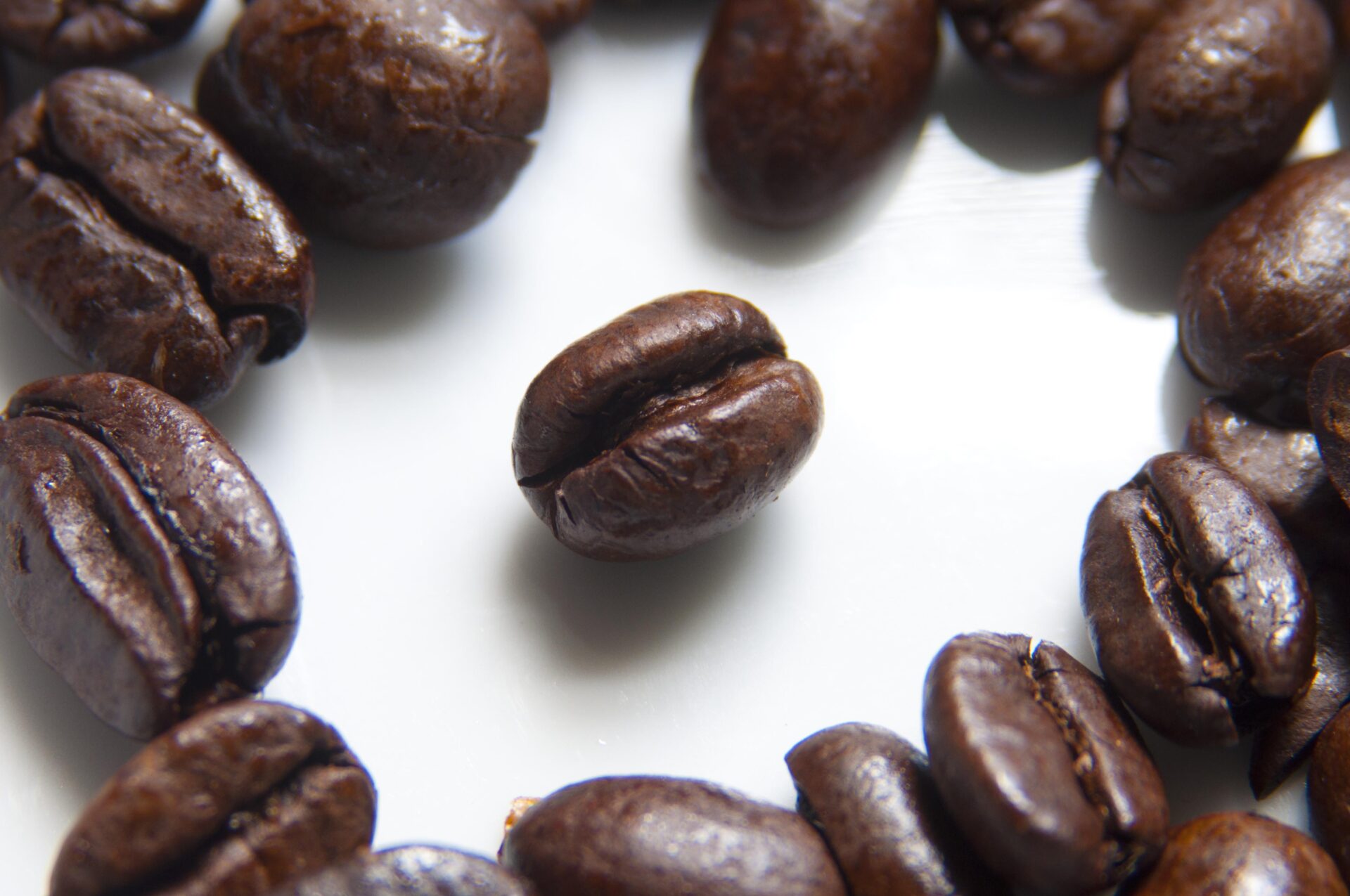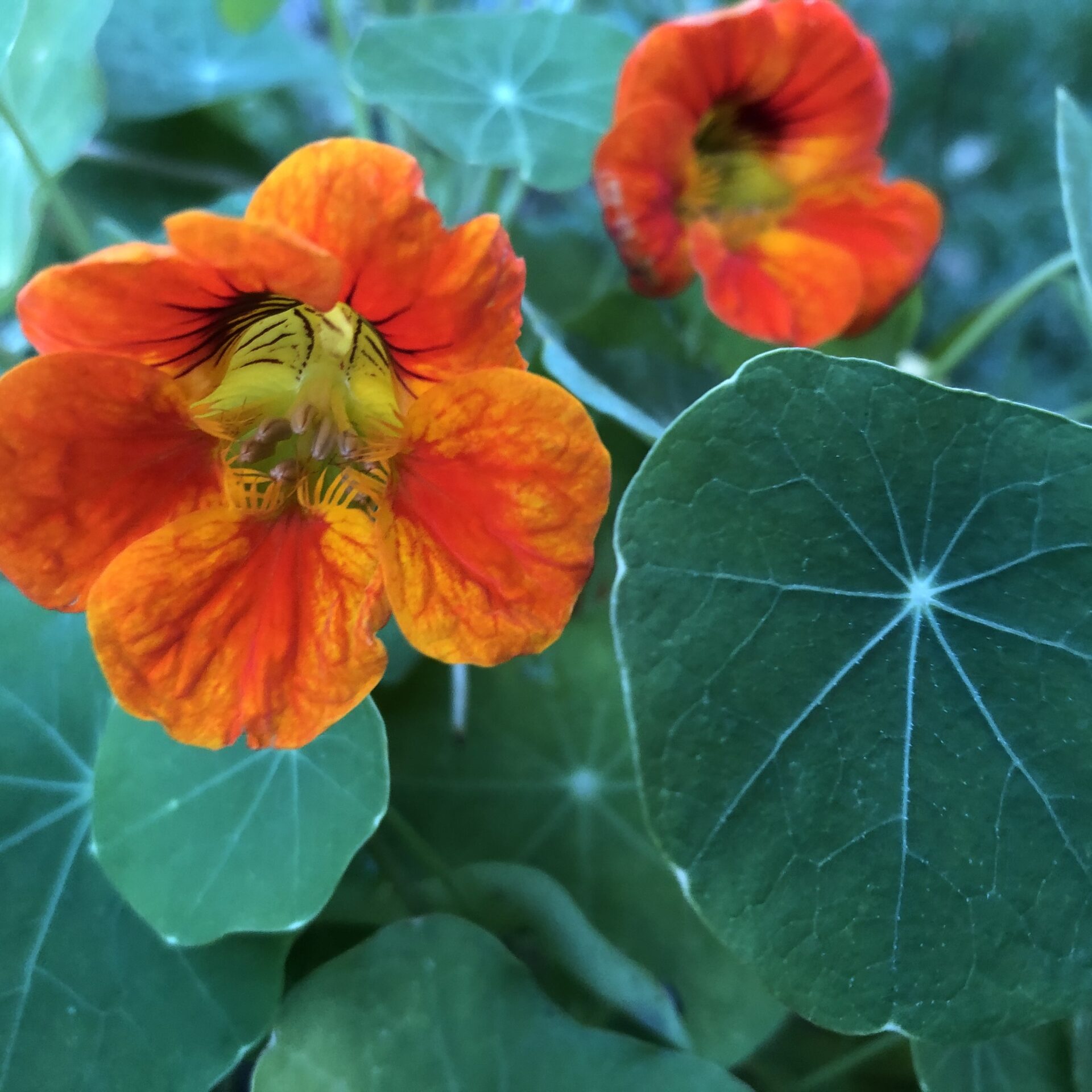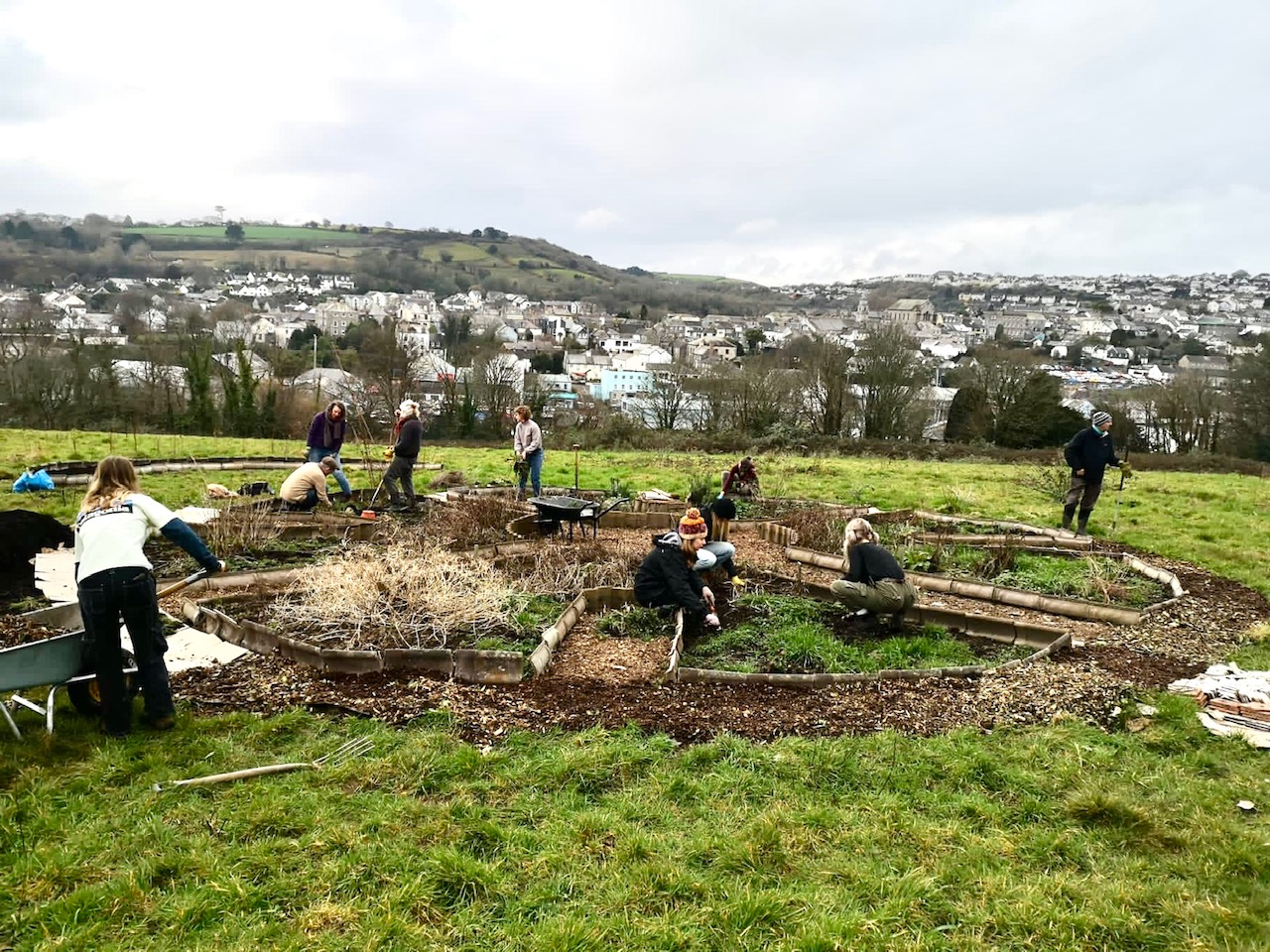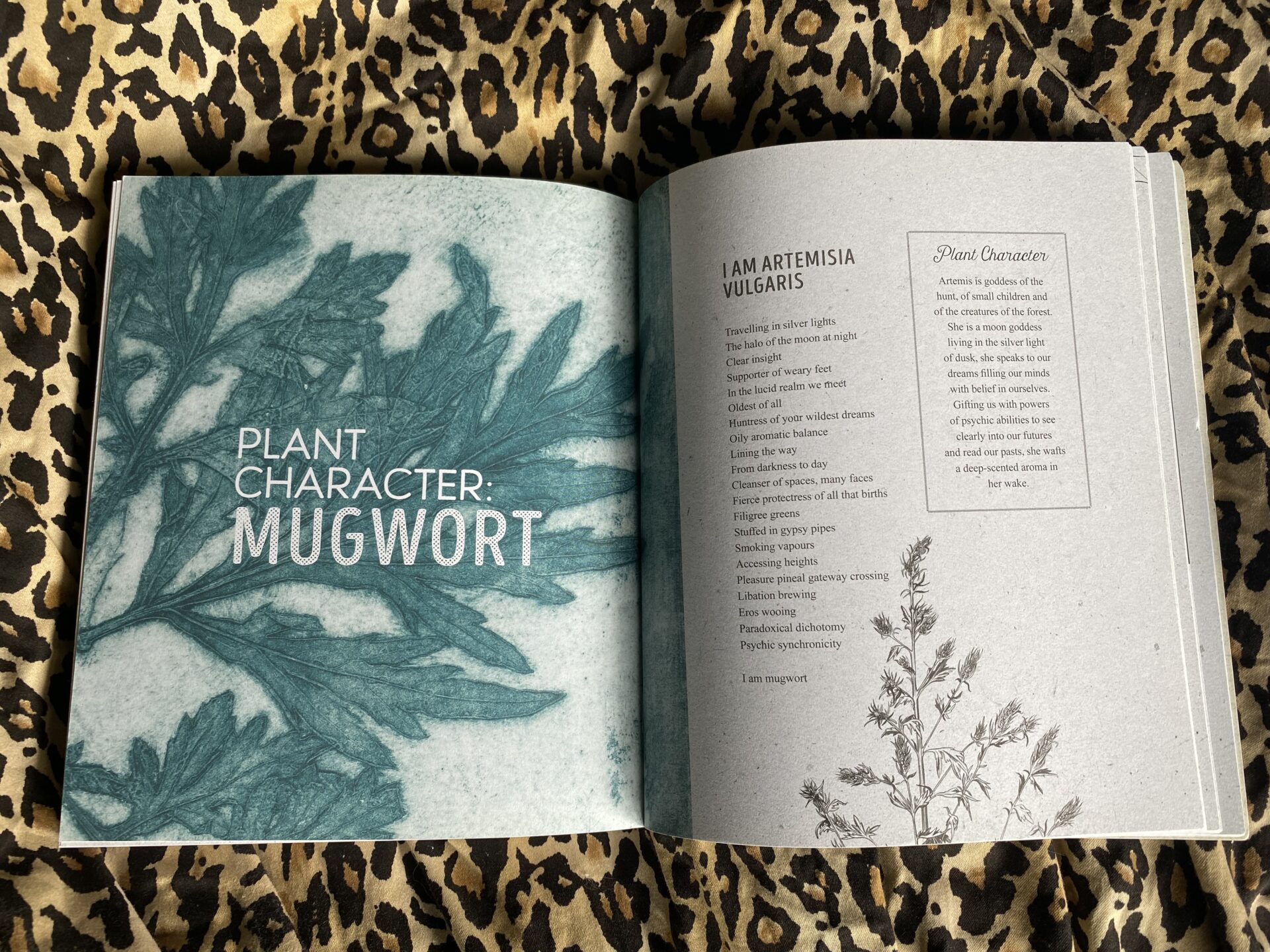By Kris Walker
As I write this article, I sit in the independent coffee house opposite my home, sipping on a single origin, artisanal roasted, expertly hand-brewed coffee from Tanzania. With each sip of the incredibly sweet, slightly sherbet-like, sour mouthful of coffee, I ask the spirit of Coffea to help me condense 14 years as a trained coffee professional into a succinct, understandable and translatable article. How do I write about my love and repulsion of the coffee world, after spending half my life doing and engaging in it? Maybe, it’s best to start at the beginning.
I work in two fields, one as a speciality barista within the coffee industry worldwide, operating between the UK and Australia, and the second as a Sensory Herbalism Practitioner. As a Sensory Herbalism Practitioner, I have been taught to use my senses, to intuit what healing or teaching a plant holds and can impart to our bodies. This has greatly informed my work with coffee, and I have come to a total love and hate space with this incredible plant. Whether you’re an avid coffee enthusiast, a stalwart health, anti-coffee campaigner or somewhere in-between, I would like to share with you here my explorations of coffee as food, drug, medicine and teacher.
The Coffee Plant
Coffee is one of the largest traded commodities worldwide, and, apart from water, the highest consumed beverage.The first step I make in exploring a plant is to observe and get to know the way it grows and where it grows. Coffee is the roasted seed contained within the fruit of the Coffea plant. The Coffea plant belongs to the same plant family as common garden Gardenias and the Cinchona plant (Where we get quinine, the same substance added to produce old style tonic water). Depending on the Coffea plant and farm, it will usually take 3-4 years once planted for a Coffea shrub to bear fruit. This fruit, usually referred to as a ‘cherry’, is meticulously hand picked at the height of their ripeness, indicated by a colour change from green-yellow to a deep, bright red.
Coffea grows in tropical to semi-tropical regions and climates that experience weather that is humid, hot with plentiful rainfall. The plant itself requires relatively hot weather (about 20-27 degrees Celsius) to have its most rapid growth stages, but then during the cooler, dryer months, it spends its energy allowing fruits to ripen and develop. Sunlight is also a factor. Direct sunlight harms the plant severely, with semi-shade under larger trees being best. Rainfall needs to be around 100-200cm annually, but the plant also requires adequate drainage in its humus and nitrogen rich soils, as water stagnation in the roots can have negative health implications for the plant.
Coffea is by no means an easy plant to grow. The farming methods used are now nearly perfected, but we can see that it is a somewhat temperamental plant, indicating to me that it has connections with sensitivities. It is sensitive to its growing conditions and prefers what it likes, any deviations from that and it struggles. I find that this pairs quite closely with emotion and personality types of coffee aficionados I know who are often very particular and attached to set routines. Furthermore the plants rapid growth during hot, wet weather, pairs with its effect on the body: an energy surge and wakefulness under the hot, sweaty effects of its adrenal stimulation.
Once picked, the cherry is then immediately processed. The inner seed is separated from the flesh of the cherry using either one of two methods; a wet or a dry method. The wet method uses water to effectively wash off all layers of mucilaginous cherry flesh and inner skins. In the dry method, the cherries are dried in the sun and heat, then winnowing separates the seed from it’s now dried husk. The reason for two different methods come down to cultural customs as well as water availability or scarcity.
Next, these dried, cleaned beans, greenish-silver in colour, are sent to the roaster. Master alchemist roasters use heat and time to develop the chemical composition of the beans in huge roasting machines. The green beans themselves are quite like lentils, in that that uncooked they are dense, spongy and quite tasteless. The roasting makes them easier to brew and enhances their flavours. Temperatures for roasting are between 180-450 degree Celsius and timing in the roasting chamber varies between 7-14 minutes. The myriad combinations of these variables result in the differences between light, medium and dark roasts, with the roasting emphasis focused on developing the coffee’s nuanced flavours.
Once roasted, the beans are then used by coffee makers and baristas to brew coffee. The act of brewing is in itself quite simple, grind the beans, add hot water, filter and enjoy. But the art of it is much more complex. Proper coffee brewing is affected by many more variables than at first glance. Water accounts for about 85-95% of an espresso and 98% of filtered coffee. The hardness or softness, cleanliness and temperature of the water all affect coffee brewing. Grind size also affects the brewing process. A smaller grind, with greater surface area allows for more extraction, whereas the opposite is true for a larger sized grind. Finally, a longer brewing time extracts more from the bean, and a shorter brewing time extracts less.
You might think that we should seek to extract all the flavour from the bean, but in practice this is not true. The art of the barista is not to extract everything that the bean has to offer, but instead to extract the right balance of sugars, salts, acids and bitter qualities to produces a balanced and pleasant cup. Coffee contains sugars which allow for sweet tastes naturally, acids which are sour tasting, salts which taste salty, tannic acids which result in that red wine, dry mouth feel, and lastly alkaloids and essential oils that are predominantly bitter tasting.
Decaffination Process
Decaff coffee is often considered to be caffeine free, but this is not true. In order for a coffee to be certified as decaffeinated, it only needs about 97% of the caffeine to be removed. Thus decaff actually mean really low caffeine, in that it still contains caffeine, but at much, much lower levels. Comparative to regular coffee, 100ml of decaf espresso has about 2-3mg of caffeine, where as 100ml of regular espresso has about 175-200mg and 100ml of filter coffee has about 40-80mg.
The ways that we make coffee decaffeinated generally relies upon water, as caffeine is entirely water soluble. Water however also acts as a solvent for acids, salts and sugars, and therefore is not selective enough to only remove the caffeine content. Thus processes have evolved using a variety of methods that seek to remove caffeine without ‘washing out’ the taste of the coffee.
In production today, there are four main methods, grouped into to either solvent-based or non-solvent based methods.
Solvent based methods are either direct, where the beans are soaked in the solvent, or indirect, where caffeine loaded water is treated with a solvent. Both rely upon chemical solvents such as methylene chloride or ethyl acetate. Whilst both are reported as having ‘low toxicity levels’, I generally steer clear of added, unnecessary chemicals in my food and beverages, choosing to use and work with the non-solvent based methods of decaffeination.
The Swiss water method of decaffeination, is actually quite ingenious. The beans are first soaked in hot water to dissolve the caffeine, but conversely this also extracts flavour characteristics. This infused water is then filtered through activated charcoal filters, which due to the porosity of the carbon, filters out the caffeine molecules and allows flavour molecules, such as oils, sugars, acids and salts, to pass through. The flavourless beans are discarded, and a new batch of green beans is then soaked in this caffeine free ‘flavour’ water. Due to the water’s saturation of flavour molecules, it is only able to take on caffeine, leaving the new batch of green beans decaffeinated but still full of flavour. This method is relatively simple and ecological, and produces coffee that can reach about 99% decaffeination.
The other non-solvent method, the CO2 method, uses liquid carbon dioxide (CO2) to selectively extract the caffeine alkaloid from the bean and nothing else. The green beans are placed into a stainless steel container and then pressurised, liquid CO2 is pumped in. CO2 liquid works similarly to a solvent in that it only dissolves the caffeine, leaving the flavour molecule component behind in the bean. Next the caffeine-containing CO2 is transferred to an absorption container, where the pressure is released, allowing the carbon dioxide to return to a gaseous state, whilst the caffeine is left behind. This method can produce coffee that is decaffeinated to around 97%, but because of its cost is generally limited to large quantities of commercial grade coffee found in stores.
Plant Teacher
As a plant teacher, the beautiful and complex Coffea is about energy, power, and to a lesser degree, the ego. It is awakening, pumping, moving and stimulating, but also it’s about having an outlet for this power. Without an external focused outlet, this power gets turned inward, forming panic, stress and worry.
If we look at the flower remedy, the flower essence of Coffea, we see that it relates to helping us overcome indecisiveness or over-analysis. It promotes greater mental acuity and processing, speeding up reaction and response. Its energy is upward, expansive and excitatory. In it’s shadow/reflective side, the essence highlights areas where rhythms need to be addressed. Perhaps cycles of energy and wakefulness with rest need to be balanced or lethargy, lack of mental clarity and speed. A really lovely example of Coffee flower essence can be found from Green Hope Farm at:
I love coffee. It’s always been my comforting beverage, its preparation and consumption an act of quiet contemplation or insightful conversation when shared with friends. Its production is its own art form. When it’s done well, coffee has awakened and emboldened me in some of my deepest and darkest times.
But coffee in excess, an unfortunate product of my chosen career, has literally made me sick to the stomach on occasion, or put me into adrenal shock. Coffee has made me agitated, liver-angry, detoxing-grumpy, anxious and paranoid.
How Coffee interacts with our physiology
When we explore the effect of coffee on the body, its wise to outline a few terms. Coffee as a plant remedy contains hundreds of different phytochemicals (plant chemicals) that affect many different systems in the human body.
Caffeine
Caffeine is one of these phytochemicals, and is the one we are most aware of and the one most studied. Upon taking that first sip of coffee, it can take as little as 10 minutes for coffee to enter the blood stream, wherein it begins to work its effects on the nervous, adrenal and hormonal systems.
Overall caffeine stimulates the stress reactions in our body, activating the sympathetic nervous system, sending us into a, albeit mild, flight or fight response.
Coffee doesn’t actually make you more energetic or awake, instead it simulates your stress response, setting off the cascade of hormones that make you alert and ready to deal with stressors that come your way. Caffeine is a neuroblocker. It binds to adenosine receptors in the brain, inhibiting the uptake of adenosine. Adenosine suppresses arousal and promotes sleep. It is a nervous system depressant. By blocking the uptake of adenosine, coffee effectively suppresses it in our body making us more stimulated and releasing adrenaline into the system.
Adrenaline, also referred to as epinephrine, is produced in the adrenal glands which are located just above the kidneys. Adrenaline works during a flight or fight response to increase blood flow to the extremities, namely muscle groups. It also increases the blood flow pumped by the heart, dilates pupils, and prepares the body deal with threats. Our ancient ancestors might have had to run from or stand and fight predators and this cascade of bodily influences prepared them to do so. In contemporary society stress creates the same cascade of effects on the body, but we rarely have an opportunity for physical exertion like running or fighting which would counteract this rush of hormones. Caffeine’s effect on the body is therefore to put our bodies into a mild state of stress and it is from this state that we feel the stimulation and alertness that makes coffee so appealing.
Caffeine also affects the heart. It increases heart rate and blood flow, but also hardens the arterial tissue surrounding the main arteries, It makes your heart work harder and faster, putting greater strain on it. This directly affects and raises blood pressure.
Coffee intake also has an affect on the production and uptake of dopamine. Dopamine provides us with a feel-good experience. Other addictive substances like cocaine also increase dopamine production. Dopamine improves mood and increase happiness, joviality and physical pleasure responses. Dopamine however can also result in bodily dependence, and withdrawal when gone without. Think of people who get grumpy when they haven’t had their coffee and find it’s a hard habit to break.
My Relationship with Coffee
My first memories of coffee are in the family home. On arrival of guests, and an offer of something to drink from one of my parents, someone would be tasked with turning on on the coffee machine. I was spoilt. From a very young age, I was surrounded by fine quality coffee. We had instant, but at the age of seven, I was captivated by using a machine to brew tiny, perfectly sized cups of a dark, golden magical liquid. I still remember the taste. Unlike most children, I quite liked the sharp, then full, then bitter taste of a neat espresso. My parents were dubious at first, insisting that I add condensed milk or milk and sugar, but I persisted in keeping it neat, and was allowed to drink espresso with the grown ups when it was made. I was even allowed to order them when we went out to restaurants after a meal. And so in my formative years, I learnt that at its roots, the energy of coffee is about awakening. It opens and excites and prepares the body for action and reaction.
Living in Australia, I was exposed to expertly prepared and culinary focus café culture, quite different to the one we experience in the UK. Free from the push of chain coffee shops, my early teen years were spent visiting coffee shops with mates drinking flat whites, and long macchiatos, for celebration, commiseration and everything in between. As I settled into adult life my life and coffee has become so inexplicably linked, that I don’t really understand what it would be like without it.
Coffee is about communication. It gifts the energy of a focused and alert mind, fostering greater, awakened dialogue and promoting chains of thought connectivity. It is linked to the energy centres of the solar plexus (adrenals) and the throat (thyroid). Here it can be thought of as activating and promoting, energy and dialogue, and also prana or breath.
I started working as a Barista (the term for coffee production professional) at the age of 14. I qualified at culinary college and then went straight to my high school’s department head for cookery with a proposal to start-up and manage a student run café during lunch times and mornings.
In this way, my first ever coffee job was as the boss. It was empowering and hard work, but I did it for two years faithfully, and much to the enjoyment of my teachers. Here I began to understand the next phase of coffee’s energy: it’s connection with stress and our personal responsibility in the face of stress.
That mild flight or flight response we talked about – coffee’s stimulating effect on the sympathetic nervous system – means that every cup of coffee forces our bodies to confront stress. Can coffee teach us about exploring and preparing for stressors in life? If we think of stress as a teacher, one of its lessons is personal responsibility. We are ultimately responsible for how we react to and nurture ourselves during stress.
Flash forward to the present, 14 years later, and I am working in London as a highly specialised coffee professional. I have opened shops, closed shops, built machines, fixed machines, roasted coffee, brewed coffee and drunk thousands of cups of varying qualities. Coffee is no longer a drink of comfort, it is how I make a living. With this degree of absolute saturation, I have reached a point where I actually don’t always like it any more.
I have found the stress response inescapable and ultimately draining. I am beginning to understand that my 14 years of dependence on it has been shining a light on stress and my inability to manage it. I need to remember my responsibility in this stress, that I have control over how I react to stress and that I can nurture myself through it. I no longer feel the need to drink coffee to prepare me, as I am already prepared. I have grown to respect coffee and drink it with awareness, moving away from just being dependant on its stimulating qualities. I have learned to move back to the formative lessons of social consumption and ritual preparation.
High and continued doses of caffeine can have serious health consequences, changing brain chemistry, resulting in negative symptoms such as jitteriness and nervousness, anxiety and panic attacks. Too many excitatory chemicals and hormones are not healthy long term for the system, as they require extreme swings up and down to maintain healthy levels and cycles.
Coffee for me personally has been about comfort. It is what I drink upon waking, coming home, heading out, celebrating and commiserating. It’s the beverage of my family, and of my home. And now that I am able to make a living from it, it is further comfort, but there will always be that element of stress. Maybe exploring my deeper self, I have learned that I have sat in the comfort and familiarity of stress for too long, and need to address this. Coffee in this fashion has been a great teacher.
Taking the time to understand your own relationship with coffee is a valuable skill. Exploring your own likes or aversions around it can help you to understand your own likes and aversions around stress and wakefulness. Maybe coffee can be a teacher for you too.

Kris Walker is a Sensory Herbalism Practitioner who is passionate about wild and cultivated herbal medicine, food and its healing power and the wonderful gift of positive and ecstatic living. Currently residing on the west coast of Australia, he is working on developing intimate connection with the Australian flora and it’s secret teachings. He likes tattoos, folklore and banjo music.





